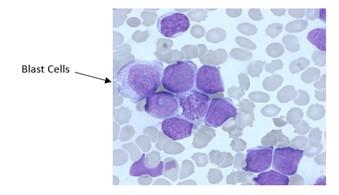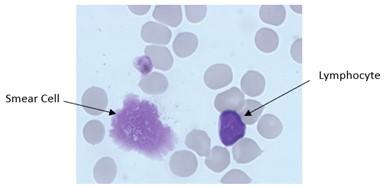May 28th is World Blood Cancer Day, a day dedicated to increasing awareness about blood cancers, their symptoms, and treatments. In this blog, we aim to highlight how blood cancer can go undetected, and provide insights into the diagnostic and treatment approaches for these types of cancers.
What is blood cancer?
Blood cancer is a type of cancer that affects the production and function of blood cells in the body. In healthy individuals, stem cells in the bone marrow can develop into three types of blood cells: red blood cells, white blood cells, or platelets. However, in blood cancer patients, abnormal cells can develop instead.
These abnormal cells are characterised by uncontrolled growth and prevent your blood from performing many of its functions, like fighting off infections or preventing serious bleeding.
What you need to know about blood cancers
- Blood cancer ranks as the third leading cause of cancer-related deaths in the UK and the fifth most common cancer overall, with over 41,000 people diagnosed each year [1]
- It is the most common type of childhood cancer. Every year, more than 500 children aged under 15 are diagnosed with blood cancer [1]
- The symptoms of blood cancers can vary depending on the type of cancer, but common symptoms include fatigue, shortness of breath, frequent infections, and abnormal bleeding or bruising. These symptoms can be minor and challenging to recognise, making early diagnosis of blood cancer a significant challenge [2]
- Research shows that early diagnosis of blood cancers can improve a patient’s chances of surviving for more than 5 years by over 3-fold [2]
![]()
What are the different types of blood cancer?
Although there are over 100 different types of blood cancer, most belong to one of three main types:
- Leukaemia is a type of blood cancer that affects the white blood cells in the body. The abnormal white blood cells divide and grow rapidly, interfering with the production of healthy blood cells. Leukaemia is broadly classified into acute or chronic forms based on the maturity of the affected white blood cells [3].
- Lymphoma is a type of blood cancer that affects the lymphatic system, which is responsible for fighting infections and diseases. The abnormal lymphocytes divide and grow rapidly, forming tumours in the lymph nodes and other parts of the body. The two primary types of lymphoma are Hodgkin lymphoma and non-Hodgkin lymphoma [4].
- Myeloma is a type of blood cancer that affects the plasma cells in the bone marrow. The abnormal plasma cells produce abnormal antibodies, which can cause damage to the bones and other organs in the body. This is more commonly diagnosed in older people and is very rare in people under 40 [5].
Click on the headings above to discover more information and high-definition images of abnormal cell examples, taken from our monthly blood morphology training Quality Slide Programme (QSP) newsletters.
How are blood cancers diagnosed?
There are a range of tests to determine whether blood cancer is present and if so, which type the patient has. The first approach usually involves collecting a blood sample to assess various factors, including full blood count (FBC), which provides information about the number and types of blood cells present.
Should the result of the FBC be abnormal, a blood smear is performed to gain insight into the biology of the disorder. This is when we can identify the specific type of blood cancer and show the morphology of the cells. For example:
1. Blast Cells from an acute Leukaemia

2. A Smear Cell and a Lymphocyte from a case of Chronic Lymphocytic Leukaemia

For a comprehensive diagnosis, additional techniques may be necessary, including bone marrow or lymph node biopsies, imaging techniques like X-rays and CT scans, and immunophenotyping that employs flow cytometry [6] to analyse surface proteins on blood cells, aiding in the diagnosis of blood cancer.
How are blood cancers treated?
The best treatment options for blood cancers depend on the type and stage of the cancer, as well as the patient's overall health. Generally, there are several different therapeutic tactics available such as chemotherapy, radiation therapy, stem cell transplant, and targeted therapy. In some cases, a combination of treatments may be used to effectively treat the cancer.
We hope this blog has provided some useful information about blood cancers. Remember, early detection is key to successful treatment, so if you are experiencing any symptoms of blood cancer, please consult your healthcare provider.
To learn more, visit the ‘We Delete Blood Cancer’ website at www.dkms.org.uk
References
1. Blood Cancer UK | Facts and information about blood cancer [WWW Document]. Available at bloodcancer.org.uk/news/blood-cancer-facts/
2. Bloodwise (2019) An End the Delays campaign report. Available at media.bloodcancer.org.uk/documents/bloodwise-delayed-diagnosis-report_RIQgdp7.pdf
3. Blood cancer: Leukaemia [WWW Document]. Available at www.dkms.org.uk/learn-more/blood-cancer/blood-cancer-leukaemia
4. Types of Blood Cancer: Lymphoma [WWW Document]. Available at www.dkms.org.uk/learn-more/blood-cancer/blood-cancer-lymphoma
5. Types of blood cancer: Myeloma [WWW Document]. Available at www.dkms.org.uk/learn-more/blood-cancer/blood-cancer-myeloma
6. Tests used on biopsy and cytology specimens to diagnose cancer [WWW Document]. Available at www.cancer.org/cancer/diagnosis-staging/tests/testing-biopsy-and-cytology-specimens-for-cancer/special-tests.html
